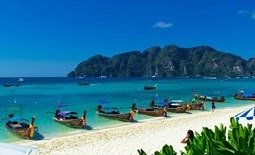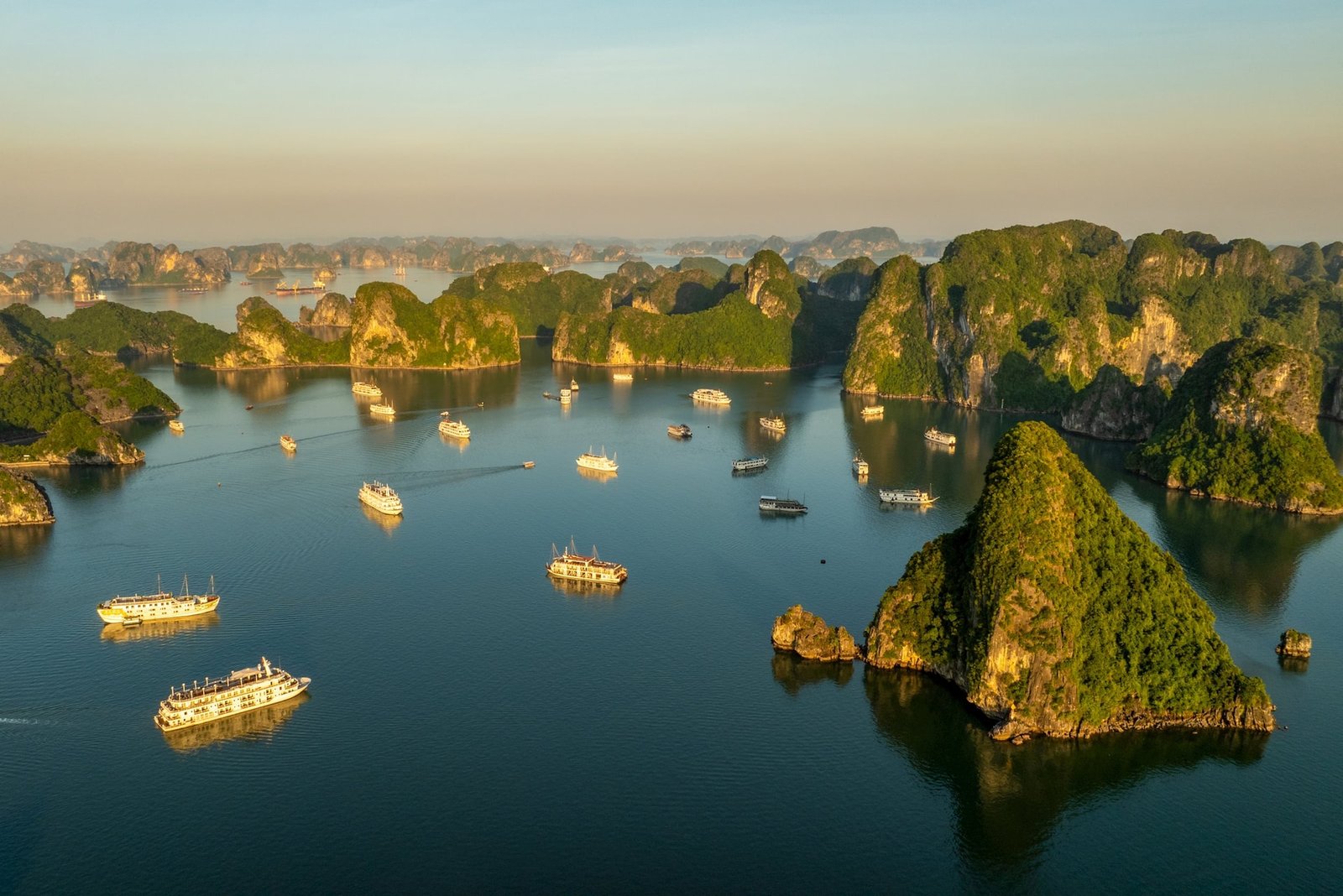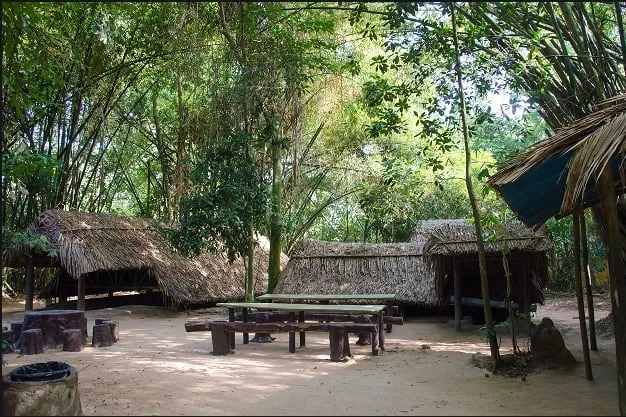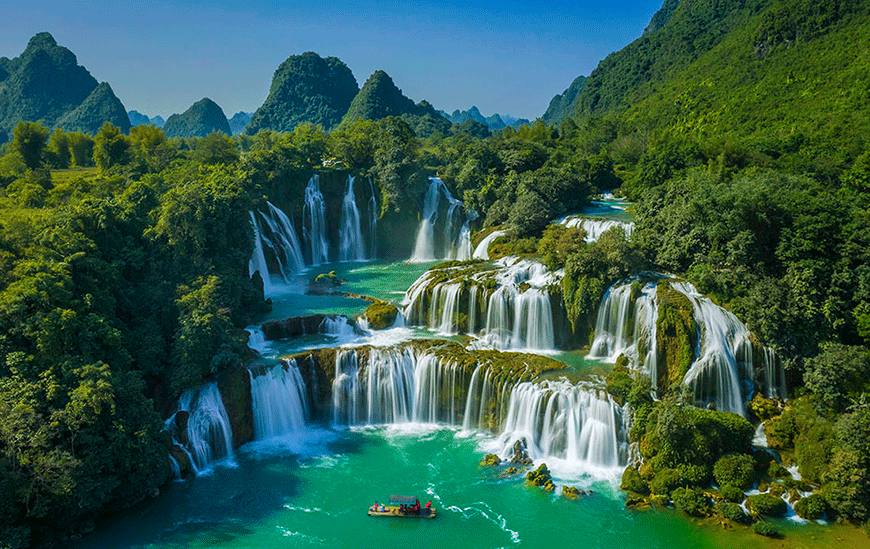Contents
ToggleWhere is Halong Bay Located?
Halong Bay is located in Quang Ninh Province in the northeastern region of Vietnam. Nestled along the coast of the Gulf of Tonkin, which forms part of the vast Pacific Ocean, Halong Bay is easily accessible—approximately a 3-hour drive from the capital city of Hanoi and about 3.5 hours from the cultural landscape of Ninh Binh. This strategic location makes it a convenient yet otherworldly destination for both local and international travelers.
Geographically, the bay is bordered by Bai Tu Long Bay to the northeast and Lan Ha Bay and Cat Ba Island to the southwest, forming a larger marine ecosystem with interconnected bays and islands. The entire region is known for its biodiversity, both above and below the water, and for its geological and cultural significance.
What makes Halong Bay truly extraordinary is its seascape—an ethereal panorama of more than 1,900 limestone karsts, islands, and islets that rise dramatically from the emerald waters. These formations, sculpted by millions of years of natural erosion, are covered in lush vegetation and often shrouded in mist, creating a mystical and dreamlike atmosphere. Many of the islands are hollow, containing massive caves and grottoes filled with stalactites and stalagmites, while others are home to floating fishing villages and hidden lagoons.
Thanks to this unique natural architecture, Halong Bay is not just a feast for the eyes but also a haven for outdoor activities. Visitors can explore the bay through scenic cruises, kayak through narrow channels and sea caves, or capture breathtaking photographs from sunrise to sunset. This stunning blend of natural beauty, accessibility, and cultural richness makes Halong Bay one of the most iconic travel destinations in Vietnam and Southeast Asia.
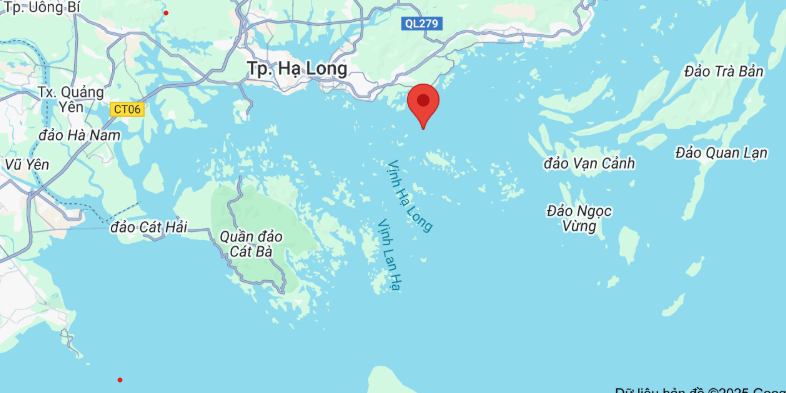
What Does “Ha Long” Mean?
The name “Ha Long” (Hạ Long in Vietnamese) translates to “Descending Dragon”, a title deeply rooted in Vietnamese mythology and cultural heritage. This evocative name stems from an ancient legend passed down through generations, which speaks of a time when Vietnam was under threat from foreign invaders.
According to the legend, the Jade Emperor sent a family of dragons down from the heavens to assist the Vietnamese people in defending their homeland. As these celestial beings descended, they began to spit out jewels and jade, which transformed into the thousands of towering limestone islands and islets now scattered across the bay. These natural fortifications created an impassable barrier for enemy ships, helping to protect the Vietnamese people and preserve their land.
The area where the Mother Dragon descended into the sea became known as Ha Long Bay, while the place where her children landed is believed to be Bai Tu Long Bay, just northeast of Halong. Together, these mythical stories give the region an almost sacred aura and elevate its importance in Vietnamese culture beyond mere natural beauty.
The symbolism of the descending dragon not only adds a mythical dimension to the landscape but also reflects the deep spiritual connection the Vietnamese people have with nature. For many locals, Halong Bay is more than just a tourist destination—it is a living legend and a symbol of national pride and resilience. The blend of myth and reality enriches every visitor’s experience, making the journey through Halong Bay feel like stepping into a timeless tale written by nature and legend alike.
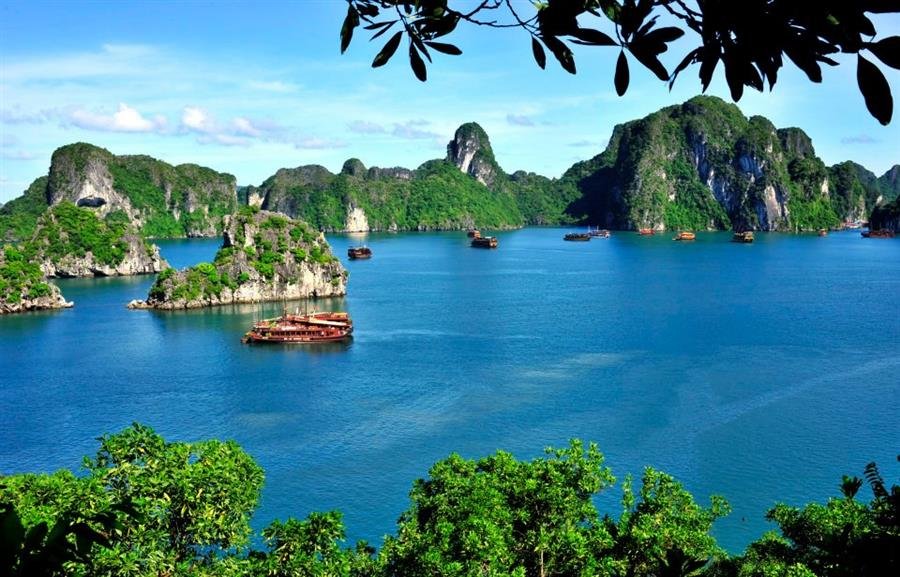
When is the Best Time to Visit Halong Bay?
Halong Bay can be visited throughout the year, each season offering its own unique charm. However, the most ideal times to explore this UNESCO World Heritage site are during spring (March to June) and autumn (September to November). During these months, the weather is pleasantly warm, with average temperatures ranging from 25°C to 30°C, low to moderate humidity, and mostly clear skies. These conditions create the perfect environment for cruising, kayaking, hiking, and photographing the bay’s iconic limestone karsts in their full glory.
In summer (July to August), Halong Bay becomes lush and vibrant, with the landscape at its greenest. The warm temperatures and bright sunshine make this a great time for swimming and water-based activities. However, this period also coincides with Vietnam’s rainy season and the occasional tropical storm, which can result in temporary cruise cancellations or delays for safety reasons. Travelers visiting during these months are advised to stay flexible with their plans and check weather forecasts regularly.
Winter (December to February) brings cooler temperatures ranging from 15°C to 20°C, along with misty mornings and a tranquil ambiance that transforms the bay into a serene, dreamlike setting. While this is not the best time for swimming or sunbathing, winter in Halong Bay offers a peaceful escape from the crowds, ideal for those seeking quiet reflection, romantic boat rides, and a more contemplative experience of the bay’s mystical landscape.
Ultimately, the best time to visit Halong Bay depends on your travel priorities—whether it’s sunshine and activity, atmospheric beauty, or a quiet off-season retreat.
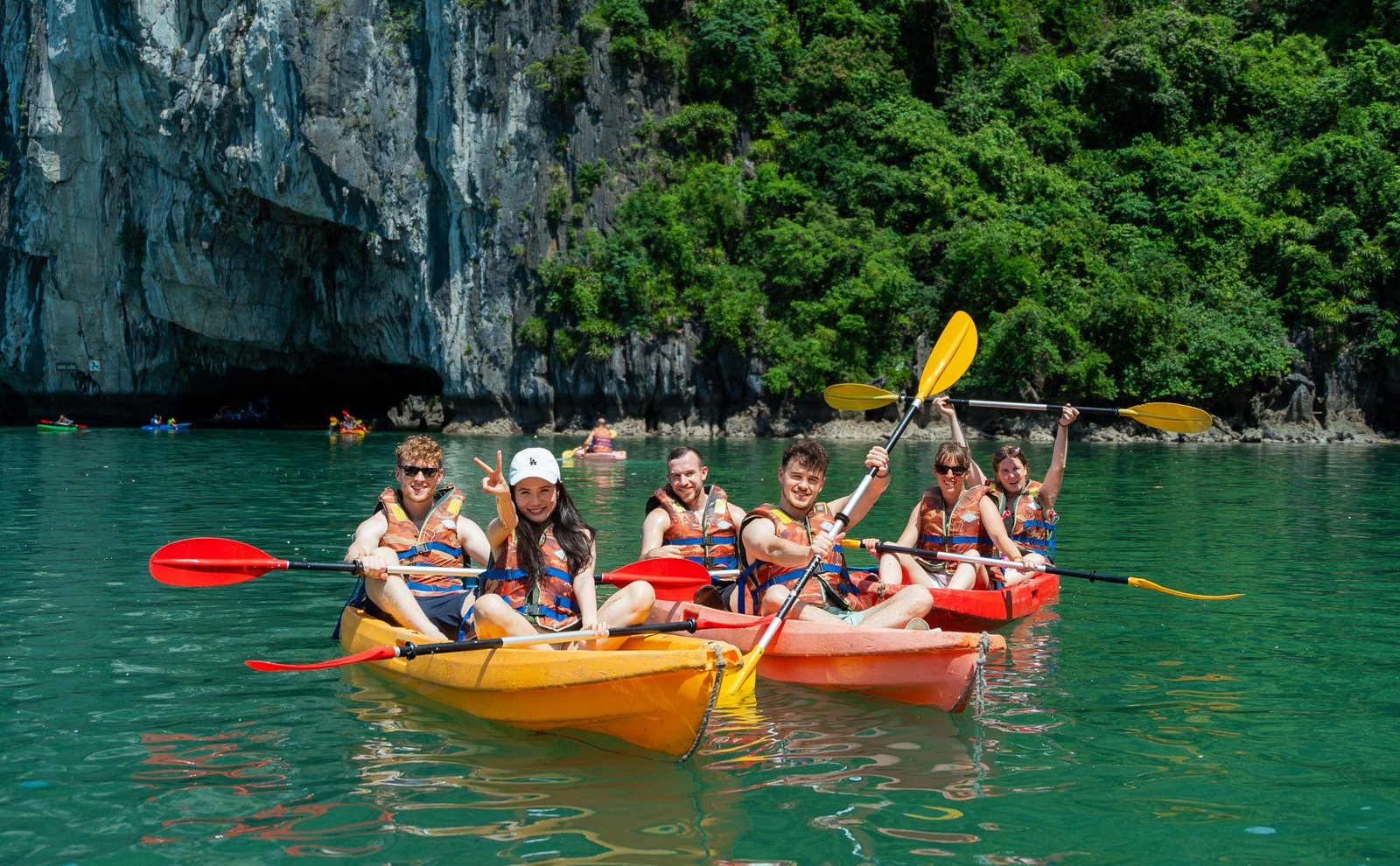
How to Get to Halong Bay from Hanoi or Ninh Binh
Getting to Halong Bay from major tourist hubs like Hanoi or Ninh Binh is convenient and increasingly efficient, thanks to Vietnam’s improved road infrastructure and wide range of transport options.
From Hanoi:
Halong Bay is located approximately 150 kilometers east of Hanoi, and the journey takes about 2.5 to 3 hours by car, shuttle bus, or limousine van. With the opening of the Hanoi–Hai Phong–Halong expressway, travel time has been significantly reduced, making it easy to plan a day trip or short getaway.
Visitors can choose from several transportation options:
- Shared shuttle buses or tourist limousines: These are affordable, comfortable, and often include hotel pickup and drop-off services. They run frequently throughout the day.
- Private car or taxi: Ideal for families or groups seeking privacy and flexibility.
- Train or seaplane: Though less common, luxury options like seaplane transfers from Hanoi to Halong Bay offer breathtaking aerial views and a unique experience.
From Ninh Binh:
The distance between Ninh Binh and Halong Bay is about 200 kilometers, and the trip takes around 3.5 to 4 hours by road. While there’s no direct train or flight, travelers can book:
- Private transfers or tourist buses, often arranged through hotels or travel agencies.
- Combination tours, which include transport and a Halong Bay cruise as part of a multi-day package covering northern Vietnam’s highlights.
Thanks to the modern expressways and wide availability of transport services, reaching Halong Bay has never been easier. Whether you’re traveling on a budget or looking for a premium experience, you’ll find options to suit your style and schedule.
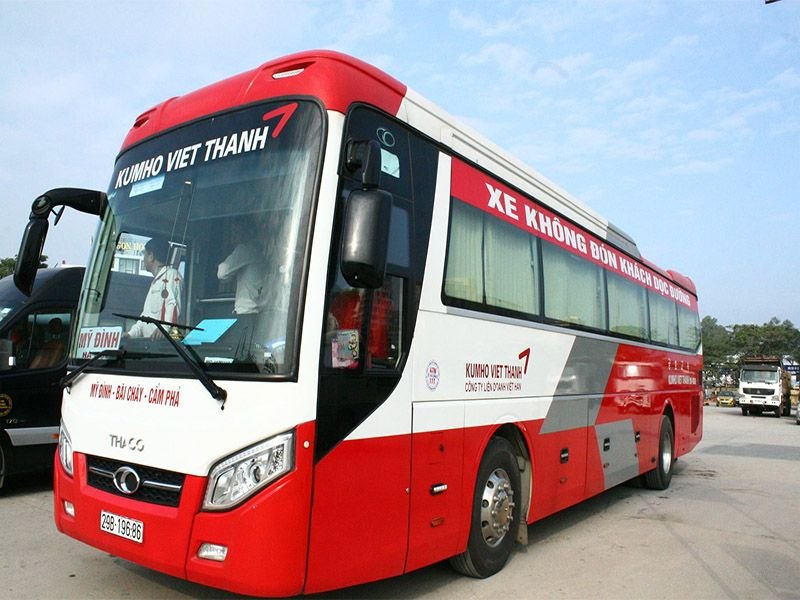
What to See and Do in Halong Bay
Halong Bay offers a wide variety of unforgettable experiences, blending natural wonders with cultural heritage and outdoor adventure. Whether you’re here for a day or several nights, these are some of the most iconic and rewarding things to see and do:
Cruise Through the Bay
One of the most popular and relaxing ways to explore Halong Bay is by boarding a traditional wooden junk boat or a modern luxury cruise. As your vessel glides through the jade-green waters, you’ll pass by thousands of towering limestone karsts, each uniquely shaped and often named after animals, legends, or human forms. Many cruises offer overnight stays, allowing you to witness the bay at sunrise and sunset — the most magical times of day.
Cruises often include stops at caves, beaches, floating villages, and offer on-board activities like cooking classes, Tai Chi sessions, and night squid fishing. Whether you prefer a day cruise or a multi-day journey, sailing through Halong Bay is the ultimate way to appreciate its beauty and tranquility.
Explore Halong Bay’s Mysterious Caves
Beneath the limestone formations lie a network of impressive karst caves and grottoes, many of which are open for exploration:
- Sung Sot Cave (Surprise Cave): The largest and most famous, featuring grand chambers filled with stalactites and stalagmites illuminated by colorful lighting.
- Thien Canh Son Cave: Known for its serene ambiance and scenic views after a short hike to the entrance.
- Me Cung Cave (Maze Cave): A lesser-known gem with a maze-like interior and a hidden blue lake, believed to be a prehistoric archaeological site.
Each cave offers a glimpse into the geological and cultural history of the bay, creating a sense of wonder and discovery.
Take a Seaplane Tour
For a truly breathtaking perspective, embark on a 25-minute scenic seaplane flight over Halong Bay. From above, you’ll see the sheer scale of the seascape — a surreal mosaic of emerald waters dotted with limestone pillars and forested islets. Departing from Hanoi or Tuan Chau Marina, the flight is an exhilarating experience and a photographer’s dream, offering views no cruise can match.
Savor Halong Bay’s Fresh Seafood
No trip to Halong Bay is complete without indulging in its renowned seafood cuisine. Thanks to the bay’s rich marine ecosystem, you’ll find an abundance of fresh catches including shrimp, crab, squid, clams, and scallops, prepared in traditional Vietnamese styles or international flavors.
Many cruise boats and coastal restaurants offer seafood buffets or à la carte menus. For a more authentic experience, visit a floating fishing village, where seafood is often caught and cooked right before your eyes — a true ocean-to-table delight.
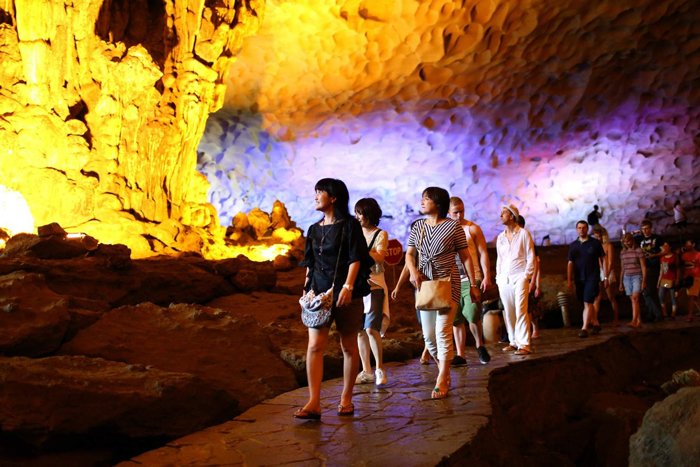
What is a Halong Bay Cruise Like?
A cruise in Halong Bay is more than just a boat ride — it’s a fully immersive experience that lets you connect deeply with the bay’s mystical scenery, culture, and serenity. Whether you choose a short day trip or a luxurious overnight stay, cruising is the most popular and rewarding way to explore the wonders of Halong Bay.
Overnight Cruises (1 or 2 Nights)
For the most complete and memorable experience, an overnight cruise is highly recommended. Spending one or two nights aboard a traditional or modern cruise ship allows you to witness Halong Bay’s most magical moments — sunset and sunrise over the water, when the limestone karsts are bathed in golden light and reflected on the still surface of the bay.
Activities often included in overnight cruises:
- Candlelit dinners featuring fresh seafood and regional Vietnamese dishes
- Vietnamese cooking classes, where you learn to prepare traditional specialties like spring rolls or pho
- Kayaking through hidden lagoons and limestone caves
- Swimming at secluded beaches
- Tai chi sessions at dawn on the deck, offering calm and mindfulness
- Squid fishing at night, a fun and interactive local tradition
Cabins range from comfortable to luxurious, often with private balconies and panoramic windows, giving you a front-row seat to Halong Bay’s breathtaking scenery.
Day Cruises (4–8 Hours)
For travelers on a tighter schedule, day cruises provide a condensed but enjoyable glimpse of Halong Bay. These cruises typically last between 4 to 8 hours and include stops at select islands or caves, lunch onboard, and limited water activities such as kayaking or short hikes.
While day cruises are great for those who are short on time, they can feel a bit rushed due to travel logistics and the vastness of the bay. Still, they offer a great introduction to the region’s natural beauty.
Private Junk Boats
For a more intimate and personalized experience, consider booking a private junk boat. These beautifully crafted wooden boats, often styled in traditional Vietnamese design, are ideal for couples, families, or small groups seeking exclusivity and comfort.
Private cruises allow for:
- Customizable itineraries tailored to your interests
- Flexible meal options and personalized service
- Secluded routes far from the tourist crowds
- Special occasions like honeymoons, proposals, or family celebrations
From budget-friendly options to 5-star floating resorts, Halong Bay cruises cater to all styles of travel. No matter which type you choose, a cruise on Halong Bay is sure to be one of the highlights of your journey through Vietnam.
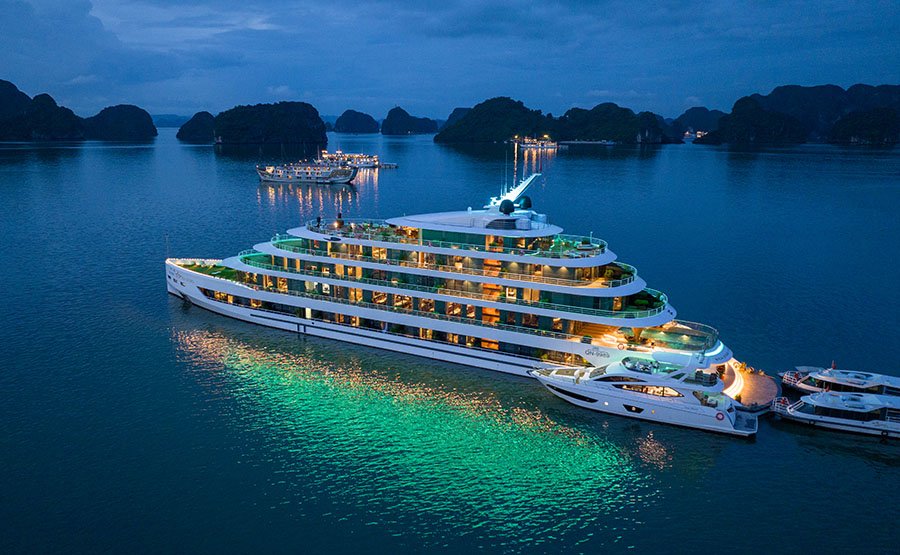
Which Bay to Choose: Halong, Bai Tu Long, or Lan Ha?
Halong Bay is part of a vast coastal seascape in northeastern Vietnam that also includes Bai Tu Long Bay to the northeast and Lan Ha Bay to the south near Cat Ba Island. While all three areas share the same stunning limestone karst landscape and emerald-green waters, each offers a slightly different experience. Choosing the right bay depends on your travel style, interests, and crowd tolerance.
Halong Bay (Central Area)
As the most famous and accessible section, Halong Bay proper is the classic choice, especially for first-time visitors. This area is where you’ll find the most iconic sights and established cruise infrastructure. It’s also the busiest, particularly during high season.
Highlights include:
- Sung Sot Cave (Surprise Cave): The largest and most visited cave in the bay, with massive chambers and dramatic formations
- Ti Top Island: Known for its panoramic viewpoint and sandy beach
- Thien Cung Cave: A colorful grotto with intricate stalactites and mythical legends
While it can be more crowded, Halong Bay offers the widest range of cruise options — from budget day trips to ultra-luxury overnight experiences — and is ideal for travelers wanting a convenient, classic itinerary.
Bai Tu Long Bay (North)
Located just northeast of Halong Bay, Bai Tu Long Bay is a hidden gem that offers a more peaceful and off-the-beaten-path experience. With fewer boats and tourists, it’s perfect for those looking to escape the crowds and enjoy the bay’s beauty in tranquility.
What to expect:
- Pristine beaches and less-visited islands
- Serene, uncrowded waters — ideal for kayaking and relaxation
- A strong emphasis on eco-tourism and sustainability
Cruises to Bai Tu Long Bay are slightly more limited in number but often cater to those seeking quiet luxury or intimate nature-focused experiences. It’s a top pick for honeymooners, nature lovers, or returning visitors.
Lan Ha Bay & Cat Ba Island (South)
Located to the south of Halong Bay, Lan Ha Bay borders Cat Ba Island, Vietnam’s largest island in the Gulf of Tonkin. This region combines the beauty of karst formations with lush jungle landscapes, making it ideal for outdoor enthusiasts and multi-day explorers.
Highlights of Lan Ha Bay and Cat Ba:
- Fewer tourists, newer and more modern cruise boats
- Access to Cat Ba National Park, home to rare wildlife like the Cat Ba langur
- Opportunities for trekking, cycling, rock climbing, and beach visits
- Calm waters, excellent for kayaking through caves and floating villages
Lan Ha Bay is a great option for travelers wanting a more active, nature-based itinerary that blends cruising with land-based adventure.
Summary:
- Halong Bay: Best for first-timers, iconic landmarks, and convenience
- Bai Tu Long Bay: Ideal for peace, fewer tourists, and pristine scenery
- Lan Ha Bay & Cat Ba Island: Perfect for adventure seekers and nature lovers looking for a diverse experience
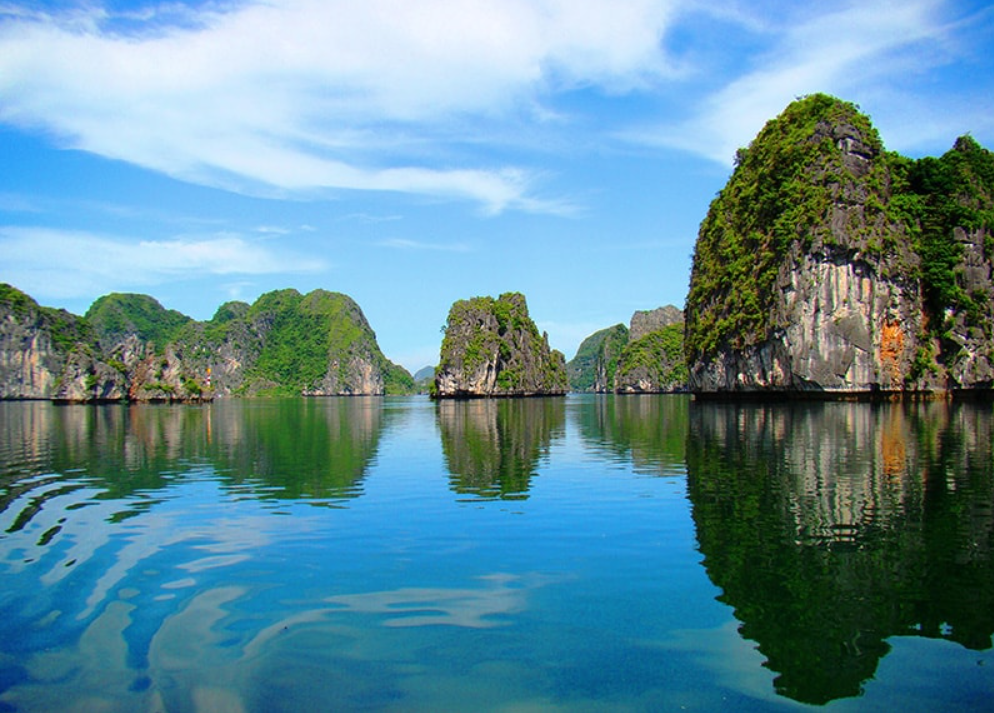
Which Bay to Choose: Halong, Bai Tu Long, or Lan Ha
How Many Days Should You Spend on a Halong Bay Cruise?
The ideal length of your Halong Bay cruise depends on your schedule, travel style, and how deeply you wish to explore the region. While day cruises offer a brief introduction, overnight cruises (1 or 2 nights) provide a far richer, more immersive experience — allowing you to fully appreciate the bay’s beauty, serenity, and unique activities.
Day Cruises (4–8 Hours)
Perfect for travelers with limited time, day cruises are compact journeys that cover the highlights of Halong Bay in just a few hours. You’ll typically visit one or two attractions — such as a cave or an island — and enjoy lunch onboard. While these trips offer a taste of the bay’s stunning scenery, they can feel a bit rushed, especially considering the travel time to and from Hanoi or Ninh Binh.
Best for: Short-stay travelers, those on a tight schedule, or visitors combining Halong Bay with other day trips.
1-Night Cruises (2 Days / 1 Night)
A one-night cruise strikes the perfect balance for most visitors. It offers enough time to:
- Cruise through multiple areas of the bay
- Participate in onboard activities like cooking classes, squid fishing, and Tai Chi at sunrise
- Visit floating villages, beaches, caves, or go kayaking
- Enjoy a peaceful evening on the water, with sunset views, starry skies, and delicious meals
This option allows you to relax without feeling rushed, making it the most popular choice among first-time visitors.
Best for: Travelers seeking a full Halong Bay experience with limited vacation time.
2-Night Cruises (3 Days / 2 Nights)
For those who want to truly unwind and explore further, a two-night cruise is highly recommended. These itineraries often take you deeper into less crowded parts of the bay — such as Bai Tu Long Bay or Lan Ha Bay — and offer more opportunities for adventure, such as:
- Longer kayaking routes
- Beach visits and swimming in hidden lagoons
- Deeper cultural interactions at fishing villages
- More relaxed onboard time and spa services (on luxury cruises)
With more flexibility and a slower pace, this extended option allows for deeper exploration and total relaxation.
Best for: Honeymooners, nature lovers, photographers, or anyone wanting a more comprehensive Halong Bay journey.
What’s Included in a Halong Bay Cruise?
Regardless of duration, most cruises include:
- Guided excursions to caves, islands, floating villages, or beaches
- Onboard activities such as Tai Chi, cooking classes, squid fishing, or kayaking
- All meals, typically featuring a variety of Vietnamese cuisine and fresh seafood
- Cabin accommodations (for overnight cruises), ranging from cozy to luxurious
Summary:
- Day Cruise: Quick overview — great if you’re short on time
- 1 Night: Most popular — best mix of activities and relaxation
- 2 Nights: Deeper discovery — ideal for slow travel and off-the-beaten-path experiences
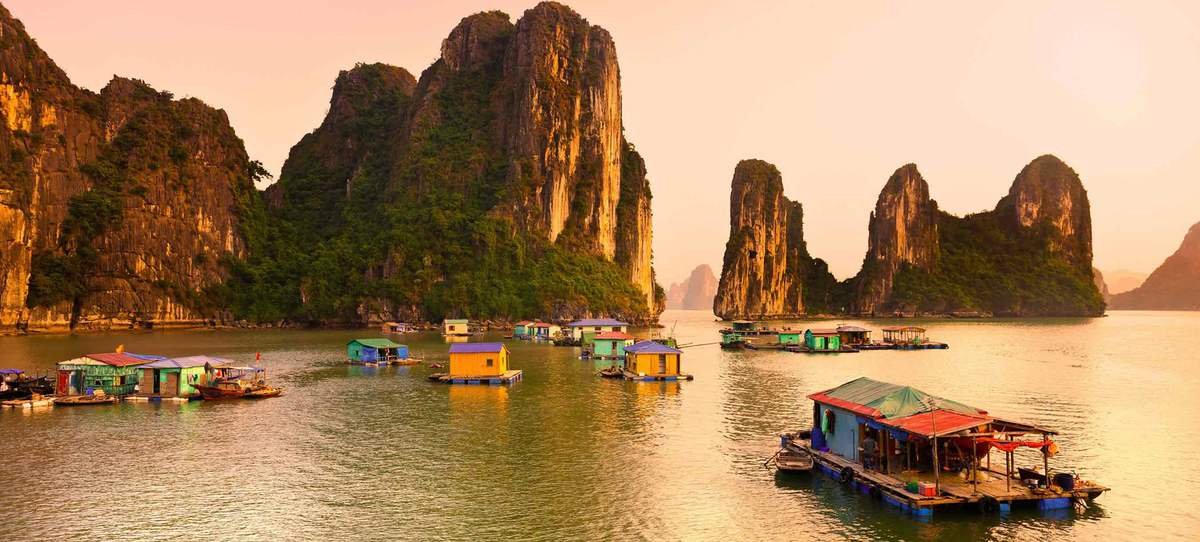
Conclusion: Plan Your Dream Trip to Halong Bay
Whether you choose a quick getaway or a luxurious multi-day cruise, Halong Bay offers unforgettable moments, breathtaking views, and a deep connection to Vietnamese culture and nature. Its unique landscape and rich legends make it a must-see destination for all travelers.
Ready to explore Halong Bay? Contact us to help you design a customized itinerary tailored to your travel style and preferences.






